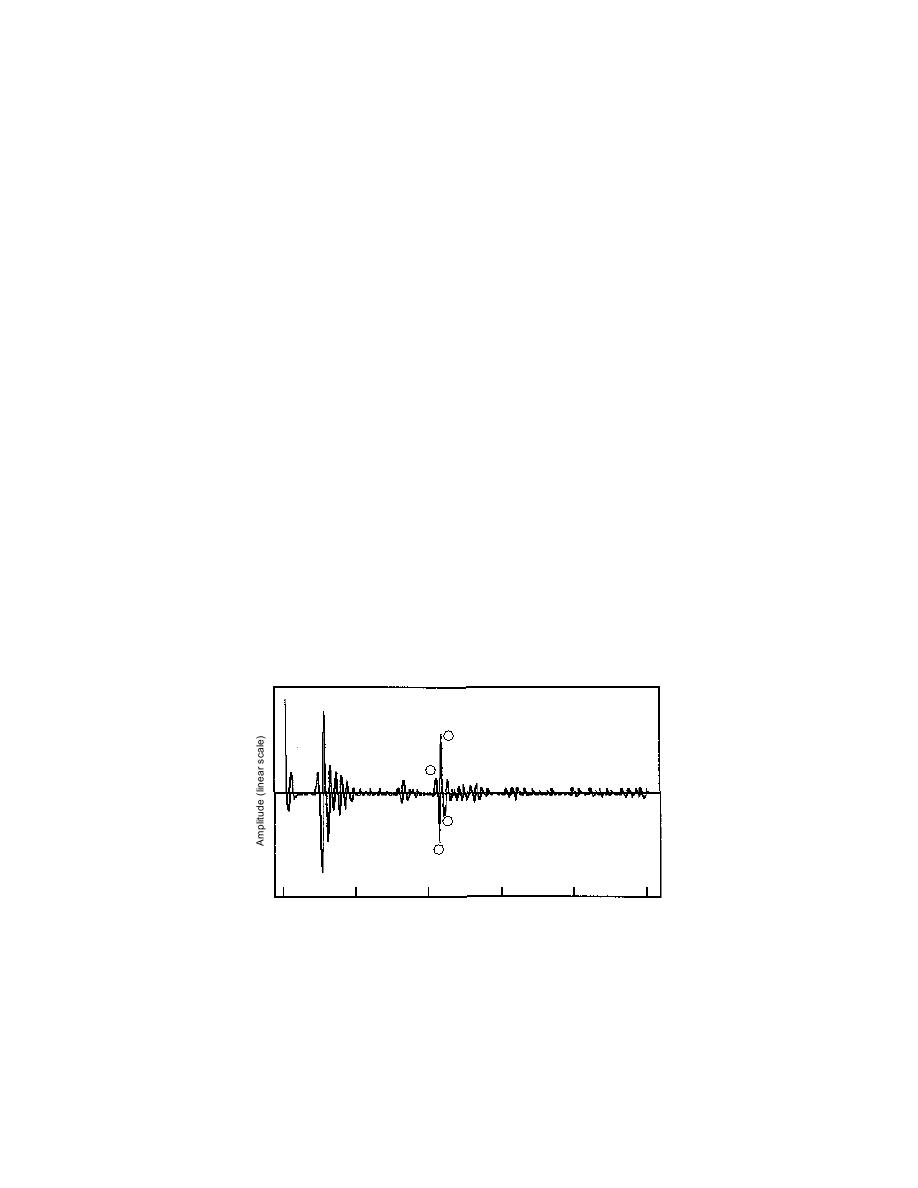
ties and hazardous waste sites (e.g., Hanninen and
surface targets before the transmit antenna has
Autio 1992, Pilon 1992), as most structures, subsur-
stopped radiating. The received signals are con-
face debris, water and fuel spills, or the soil distur-
verted by sampling into an audio frequency fac-
bances they cause, are strong radar targets.
simile for filtering, amplification, digitization and
This report discusses the use of GPR to detect
recording.
such targets at South Pole Station, Antarctica. A
companion report (Arcone et al. 1994) discusses
Antennas
additional surveys on the use of GPR in the vicini-
All antennas were flared and resistively load-
ed dipoles designed to produce a wavelet of
ty of McMurdo Station, Antarctica.
about 2 cycles duration (Fig. 1). All wavelets have
a 3-dB frequency bandwidth of about 35%. The
RADAR EQUIPMENT
100- and 400-MHz characterizations refer to the
approximate instantaneous frequencies of the ra-
General operation
diated wavelets when coupled to snow or ice;
The radar utilized a Geophysical Survey Sys-
higher frequencies result when radiating in air.
tems, Inc., SIR Model 4800 control unit, 100- and
The 400-MHz transmitter and receiver antennas
are backshielded and housed in one unit (Model
ducers, cables, a GSSI DT6000 digital tape recorder
3102, GSSI, Inc.) at a separation of about 15 cm.
and a power supply. The control unit keys the
The transmitter produces an 8-W peak power ex-
transmitter on and off at 50 kHz (synchronized
citation. A 100-MHz pair of transmit and receive
with the receiver), sets the scan rate (rate at which
echo scans are compiled; generally 25.6 scans/s),
scan time range and the time range gain to be ap-
and they are of the same design, but housed in
plied to the scans. The transmit antennas radiate a
separate backshielded units so that the separa-
broadband pulse lasting only a few nanoseconds
tion distance is variable.
(ns) at 400 MHz and about 1520 ns at 100 MHz.
Consequently, the antenna produces a low-gain
Antenna directivity
radiation directivity pattern in ice or firn. Pulse
The antenna beam pattern radiated into the
shapes and directivity are discussed in detail be-
ground must be considered when planning a sur-
low. A separate but identical receive antenna is
vey of parallel lines so that subsurface coverage
employed because echoes can return from near-
can be complete. Theoretical transmit radiation
DC
Subsurface
+
+
SOS
0
30
60
90
120
150
Time (ns)
Figure 1. Short-pulse radar wavelet transmitted and received by
and 400-MHz antennas. SOS is an artificial start-of-scan pulse and
DC is the direct coupling between antennas (followed by resonance at-
tributable to the snow cover). The large amplitude subsurface reflection
is from a utilidor metal roof and the + + phase polarity sequence is
characteristic of a conductive, or positive (i.e., higher than overburden),
dielectric anomaly. The opposite sequence occurs for a negative
anomaly such as a void.
2





 Previous Page
Previous Page
